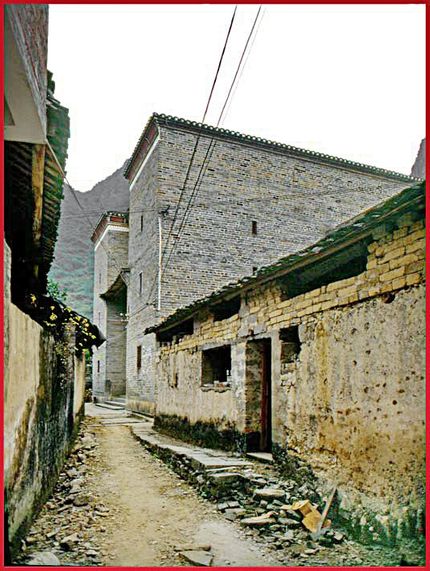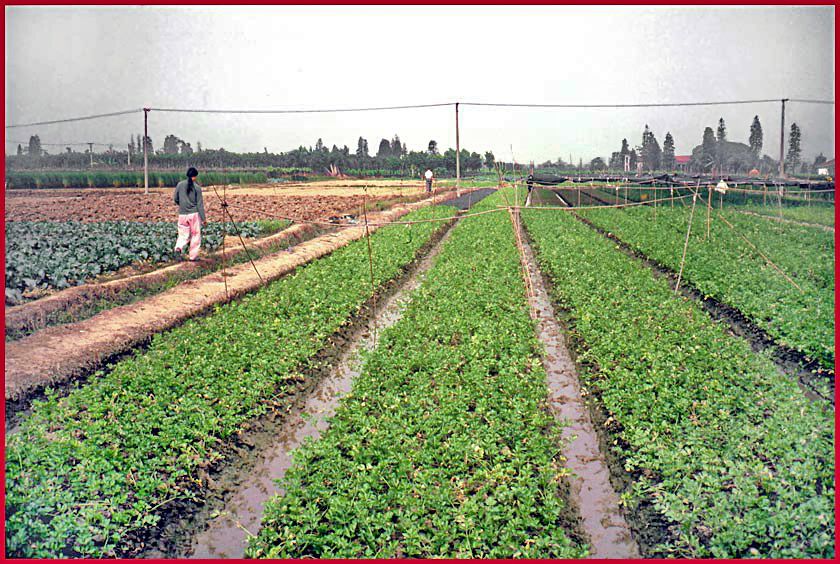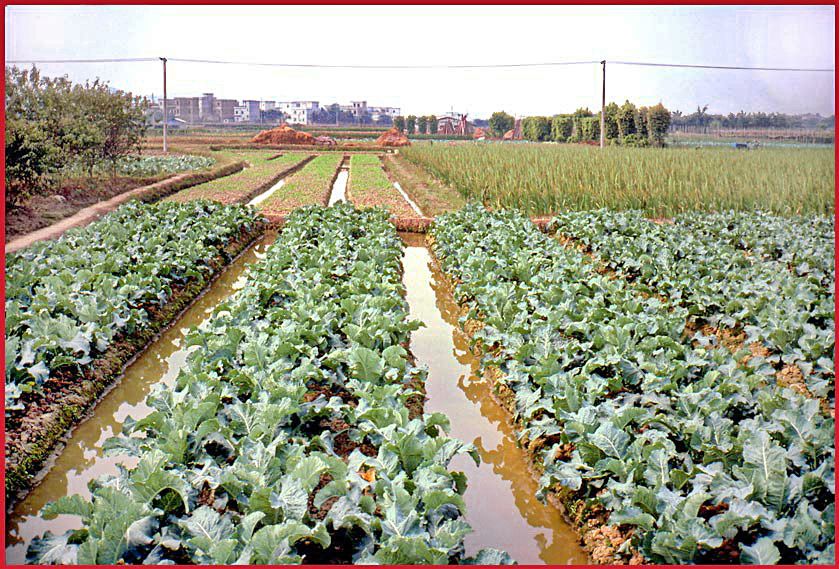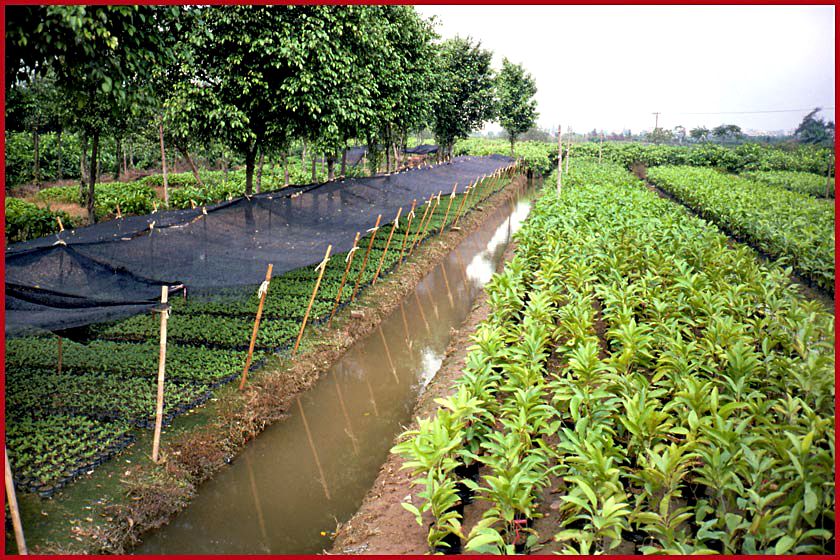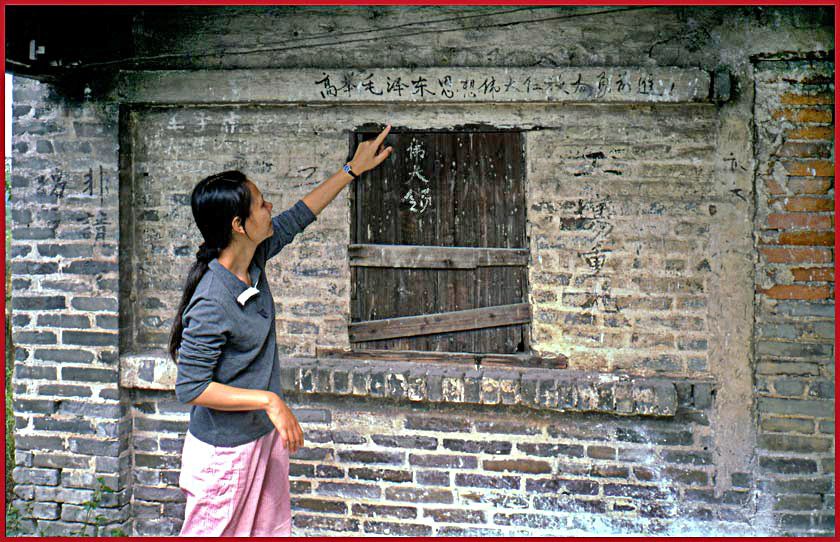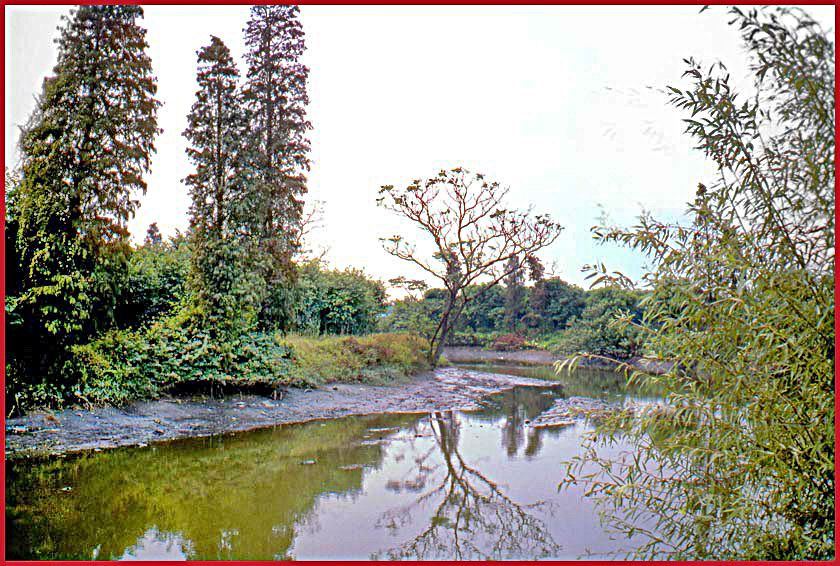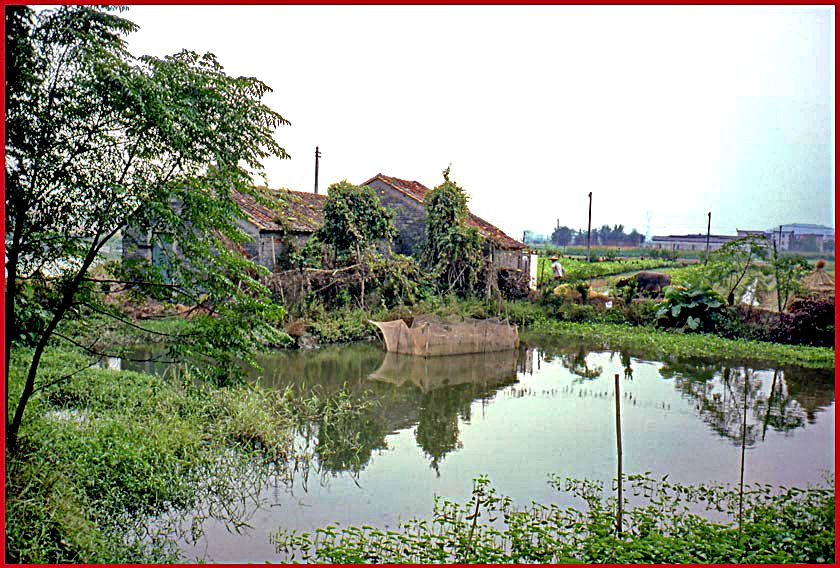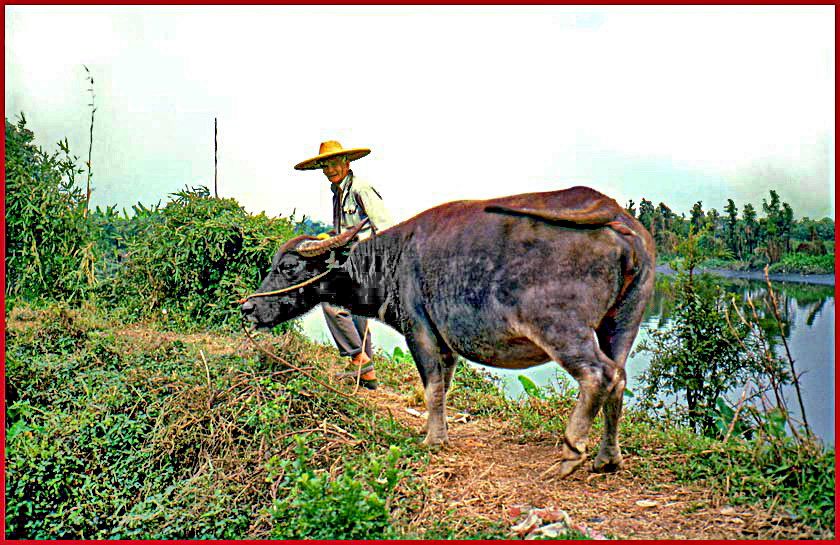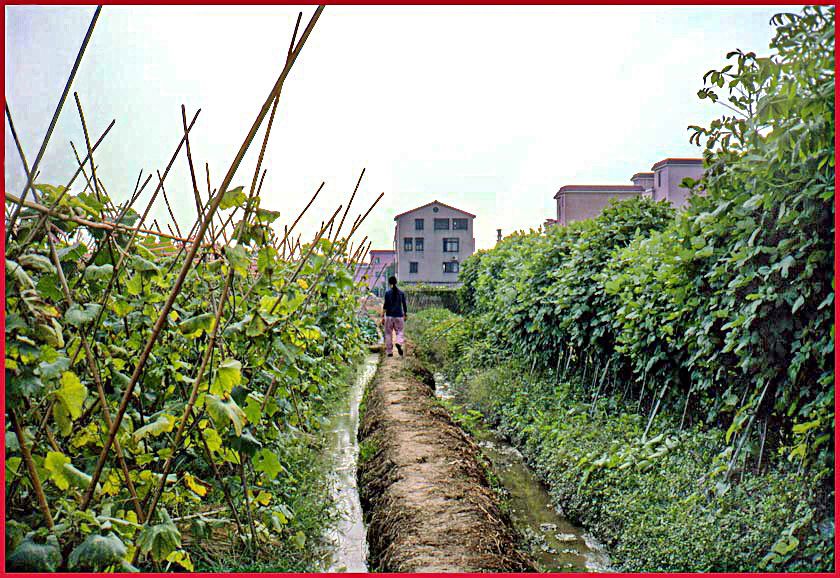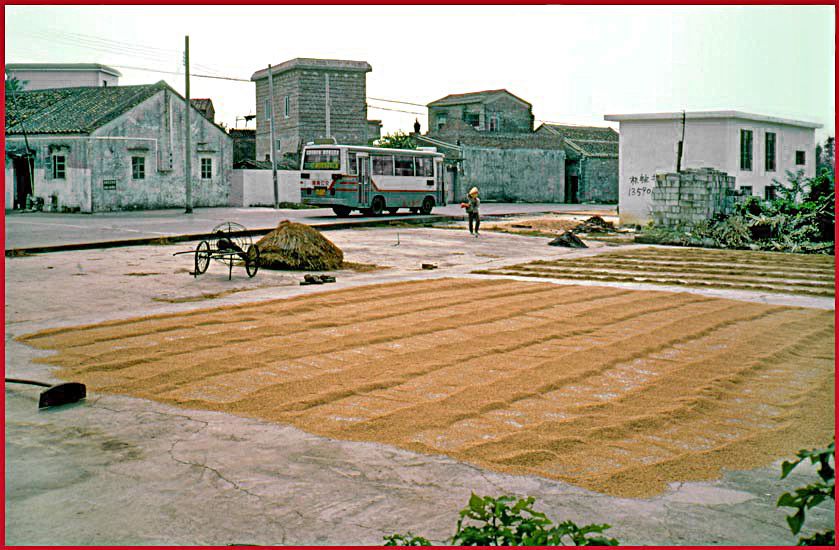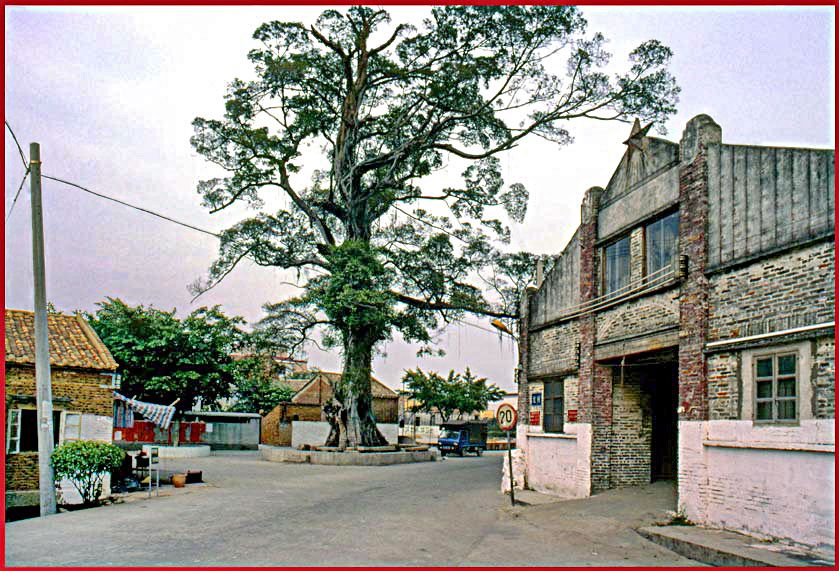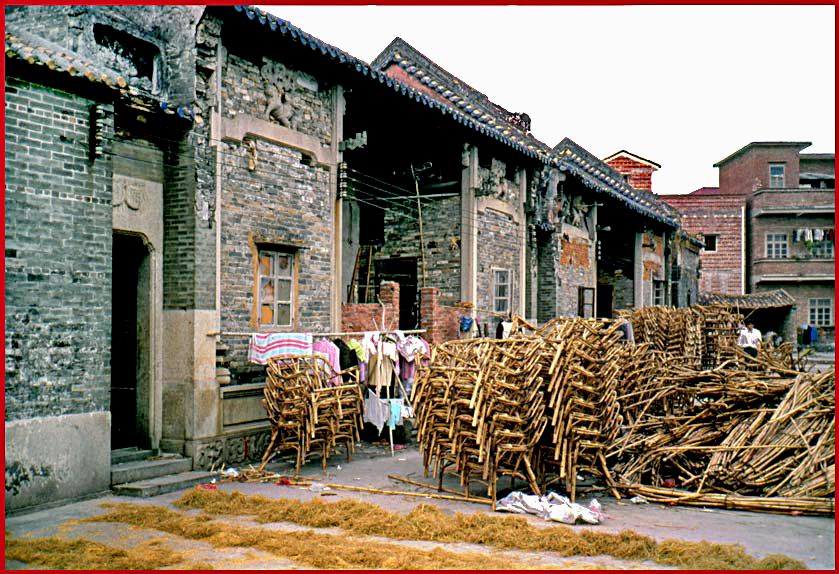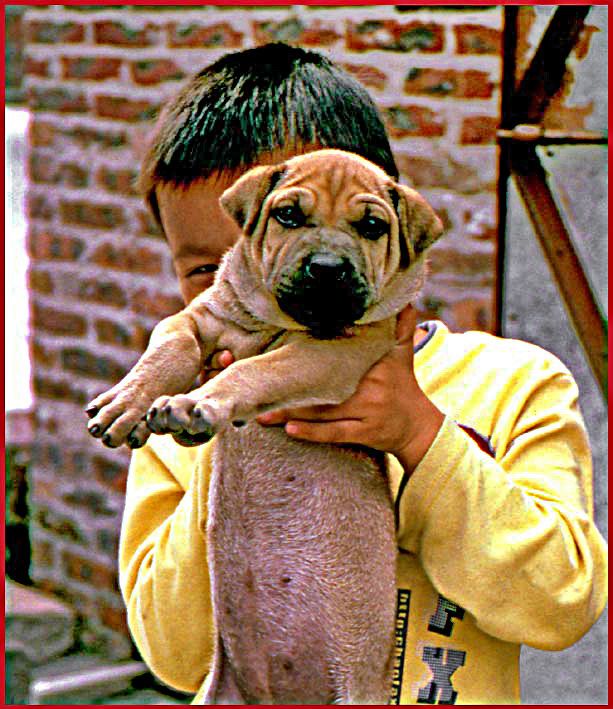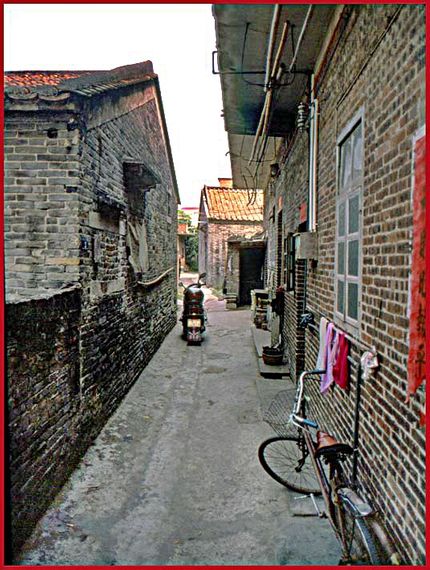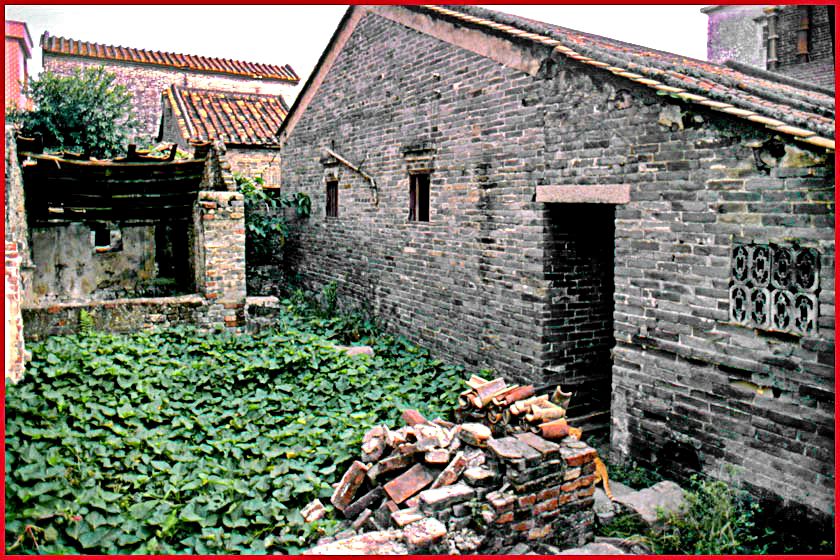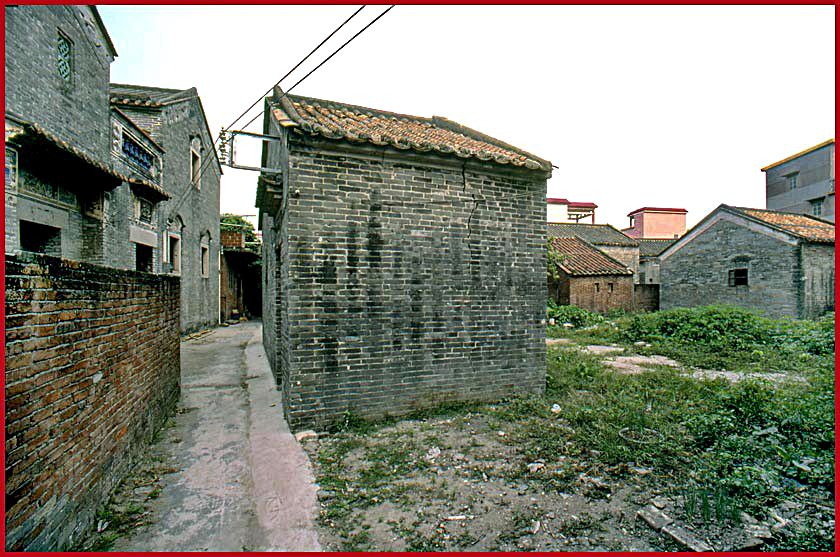VILLAGE SHEN SHUN
- home of the Tao family Ancestral Manor -
2021-12-14 - Page finished
If you liked the visit to the "old woman's house" - in the ancient water town of Wuzhen -, I have reason to believe, that you also would be thrilled to see the Tao family Quin Dynasty manor house in Shen Shun.
At the time when I visited the "Old Woman", - I still had not visited my own family's great ancestral manor house, but during my visit to China in year 2003, I finally got the opportunity to see this authentic manor, where virtually nothing had been changed since the Land Lord manor was built in the late Quin Dynasty.
How the manor survived - and still remains in the possession of the Tao clan, is an interesting story.
When it was built, the the manor was surrounded by rich farmland - also belonging to the estate -, but due to bad luck in gambling, piece after piece of the valuablr farmland was lost, - and one day only the great manor house remained left in the family's possession.
Normally such a fate would be considered very unfortunate indeed, - actually a disaster -, but due to the sometimes very unpredictable ways of history, this unfortunate loss of the family land actually turned out to become expremely good luck - at least fot the Tao's, - but most likely a disaster for those who took over their land - - -
Here's how that came about!
China was lost to the communists in 1949 - except for Taiwan that remained China - and that meant, that it suddenly became a crime to own land and to be rich and well educated. If that was the case, your possesions were taken away from you, and you became degraded and humiliated, - and maybe punished or sent away to the countryside "to learn from the farmers". If you had really bad luck you could even be executed as an "enemy of the people".
But now the Tao's had NO land left anymore, - and consequently they were not landlords anymore and had no land to steal, - and therefore they were not enemies of "the people" anymore. They still had their great manor house, - but the "red guard" did obviously not care about that! Not so0 for other landlords, - they got both their land and their manor houses stolen, - and out went the landlord and his family - and in went 4 to 6 farmer families instead - or maybe more - and those of you who have done China, will without doubt have seen see those huge former manor houses, - now converted to apartment blocks in the Chinese countryside.
But Kit Yu's family did not get suspected of being "bad people" or "enemies of the people", and by cleverly disposing of things that could prove otherwise - like for example their collection of western classical- and jazz music -and western books -, they miraculously avoided problems in spite of the fact, that their huge, family house could easily acommodate several farmer- and worker families.
But others were not so lucky. In the chinese villages you still see the once great manors where the owners had been thrown out for punishment - or even execution - - - -
2003-20-057 - This photo of such a house I took in the village of Yuchun. Like the Tao manor - also this house is symmetrical around a center section with the entrance, - but today this great Yuchun manor is not occupied by the owner and his family, - but by 3 other families.
Take note of the very few - and very small windows. This is for protection against intruders and enemies during turbulent times.
Photo- and copyright: Karsten Petersen
Village Shen Chun - and surroundings - - -
Before I continue to the Tao clan's ancestral house in Shen Chun, I find it better first to show the village itself and it's surrounding farmland
Why is that - you may ask - because there is absolutely nothing of interest to a tourist in Shen Chun -- no glittering light, - no night clubs, - no fancy restaurants, - no karaoke bars, - no discos, - no Chinese Walls, - no spectaculat temples or palaces - no nothing - - -
But the fact that there is absolutely nothing that appeals to the tourist industry makes it worth while to visit, because here you have a totally normal, typical Chinese village - the real thing - like thousands and thousands of similar villages all over China, - and of that very reason it is very interesting to have a closer look at such a place, where no tourists would even dream about putting their feet in spite of the fact, that Shen Chun is very near hustling, bustling noisy, big city Guangzhou - - - -
However - in order to keep up with the changing times and its conveniences, the Tao family built a new, huge and modern 3 story house at the outskirts of the village - right where the farmland starts.
However - only the daughter Kit Yu - my dear wife - really enjoyed it there, and she often spent time there, - and by the way -, she also designed the house - so no wonder - - -
And the old ancestral manor house????
It is certainly not empty, but inhabited by "Elder Uncle" - a very kind, wise and gentle old man -, who stayed there all alone. The younger generation has no feeling for the old house, and it looks as if nobody is interested in taking over when "Elder Uncle" is not around anymore.
The house is antique, - has never been modified - and lacks all modern facilities, - and of course young, modern people cannot live in such a house - in a sleepy, small Chinese village hidden away in the countryside. There is - however - both electricity installed and also erected a water supply into the house .
But it is in fact these circumstances that makes this old house FANTASTIC. It has a truly great atmosphere with lots of "soul and spirit", "feeling" and history, - which you do not find in modern houses - and in addition to that it is also very, very beautiful in it's proportions and details
Only Kit Yu understands and "feel" this beauty - - - - - And of course that goes for me as well.
But now let's take a trip to Shen Chun, - visit the village and the countryside around-, and finally pay a visit to "Elder Uncle" living in the magnificent, authentic Qing Dynasty manor house - - -
2003-14-005 - Kit Yu inpecting the immaculately tended fields - good soil - at her house just outside Shen Chun (Photo- and copyright: Karsten Petersen)
2003-14-006 - Fields with narrow footpaths inbetween and irrigation canals. (Photo-and copyright: Karsten Petersen)
2003-14-011 - Very intensive agriculture - - - Every bit of soil is utilized - - - (Photo-and copyright: Karsten Petersen)
2003-14-012 - Kit Yu showing me an old farm house outside Shen Chun - still with revolutionary Mao quotes on the wall - ((Photo- and Copyright: Karsten Petersen)
2003-14-014 - The Pearl River delta - - A beautiful, peaceful section of the river delta passing Shen Chun - (Photo- and copyright: Karsten Petersen)
2003-14-016 - Here we pass a farm house - - - (Photo-and copyright: Karsten Petersen)
2003-14-017 - And here the farmer with his water buffalo on their way to work - (Photo- copyright: Karsten Petersen)
2003-14-019 - Kit Yu checking outthe farmers water cleaning device - - - - don't ask me how it works, but it is obviously some sort of filtering device that cleans the Pearl River water, so that it can be used for cooking and drinking, which is otherwise not possible due to the heavy pollution of the Pearl River - - - (Photo- and copyright: Karsten Petersen)
2003-14-024 - Here we are back again - Kit Yu in front - approaching Kit Yu's big house - the one right in the middle - where we lived during our stay in Shen Chun - (Photo- and copyright: Karsten Petersen)
2003-14-026 - View from a window in Kit Yu's country house - - - (Photo- and Copyright: Karsten Petersen)
2003-14-027 - Village Shen Chun - The rice crop is being dried - whereever there is an open space - - - (Photo- and copyright: Karsten Petersen)
2003-14-028 - Village Shen Chun -many traditional houses - and rice being dried on the road - - - (Photo- anD copyright: Karsten Petersen)
2003-14-030 - Village Shen Chun - the big tree at the center of the village - a popular meeting point for people to talk and chat. Take noteof the building to the right with the big star at the top - a typical "souvenir" from the Mao era - - -(Photo- and copyright: Karsten Petersen)
2003-14-031 - The old village temple in Shen Chun. During the Mao period it is estimated that 75000 buddhist temples were destroyed and disappeared. However - some survived the madness and the fury of the Red Guard being converted to bicycle repair shops or tea houses - or like this one to a chair factory - - - (Photo- and copyright: Karsten Petersen)
2003-14-034 - Village Shen Chun - - - "See my dog"!!!! (Photo- and copyright: Karsten Petersen)
2003-14-035 -
One of the narrow alleyways in the center of Shen Chun - getting closer to the Tao clan's ancestral mansion - - - (Photo- and copyright: Karsten Petersen)
2003-14-035 - Some old village architecture. (Photo- and copyright: Karsten Petersen)
2003-14-037 - The Tao family's ancestral home - Finally - at the center of Chen Chun - and in a maze of old, narrow passages - you suddenly stumple upon a great, old house - a manor - from the Quin Dynasty - the Tao clan's ancestral manor house - which you can see to the left in the photo - - - (Photo- and copyright: Karsten Petersen)
